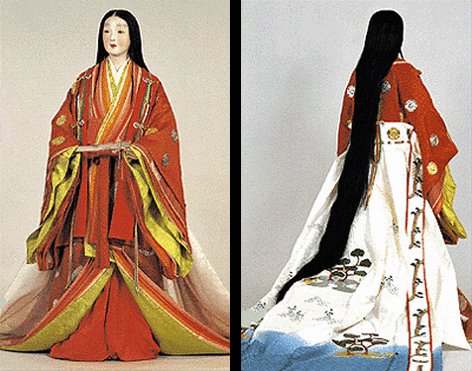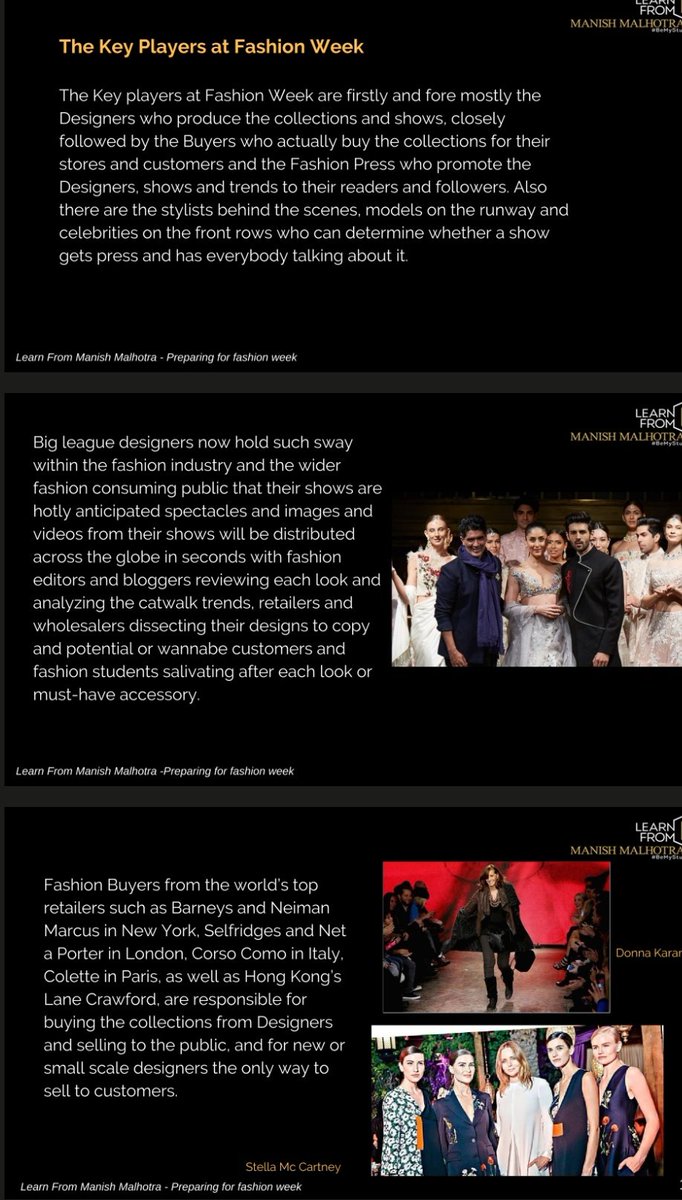
Fashion history of Japan: a thread (starting from Heian period, 794 AD till post occupation)
Heian period (794-1185AD): The most well-known clothing of the Heian period is the junihitoe, or 'twelve layered robe', worn by the highest-ranked ladies of the Imperial Court. Women could wear as few as two layers up to twenty or more, depending on season, occasion, and rank. 

Women could wear any color but 'aka' (red) would be reserved only for men of a specific court rank and kurenai, a shade of crimson obtained from safflower which was reserved for the ladies of the Imperial family. 



The robes themselves were usually plain, flat silk, as brocades and other kinds of figured silk could only be worn if one had imperial permission. Bright colors were the dominant tones in men's clothing. Purple, red, green and blue paired with lacquered silk hats indicated -
certain ranks. the Agekubi men's robes were elevated to the highest level of ceremonial dress for the Imperial family. The only people wearing the round-necked robes were members of the Imperial family during their marriages, or during the investiture of a new Emperor. 

The common people, who weren't permitted to wear the extravagant dress of the aristocrats, wore simple Kosode (Short Sleeve) style garments which allowed them to do manual labor. 



Muromachi period: The classic Noh dramas came to prominence in the this Period, and the elaborate costumes reflected the dress of the time. The plays often depict scenes from the Tale of the Heike as well as the Tale of Genji. The costumes were made of thick, rich brocade and - 

had structural differences which set them apart from other traditional Japanese theatre costumes, making them easily identifiable. From these costumes, we know that the this Period kimono had wider body panels and narrower sleeves, which fell lower on the arm than both modern - 

kimono and kimono predating Muromachi Period kimono. We also know that kimono sleeves were often sewn directly to the body of the kimono, a tradition that would eventually have to pass away as fashion developed further. The Kosode officially becomes outerwear, and women cease - 

Edo period: During the this period (1603-1868), fashion was very important for both women and men in Japan. Ladies wore exquisite kimonos made of silk and brocade, and elaborate hairstyles were adorned with exquisite hair ornaments. 

In kabuki plays, actors appeared on stage in dazzling costumes. Kimono has many different layers and pieces, made from gorgeous fabrics that are woven, dyed, painted, and embroidered. Designed for each of the four seasons, kimono are often are decorated with seasonal motifs, - 

such as cherry blossoms for spring, maple leaves for fall. The peasants, merchants and artisans wore rough kimonos made out of cotton. The upper class would wear elaborate kimonos made of silk. The samurai wore woodblock patterns on their armor and their daily clothing. 





Meiji period: Until the Meiji Restoration, Western fashions were virtually unknown in Japan. Sumptuary laws passed by the Shogun in 1643 imposed a dress code that revealed an individual’s social status. Only nobles and members of the military class were permitted to wear - 

luxurious, patterned silks, satins, and elaborate brocades and to adorn themselves with fancy sashes. With the abolition of the laws by the Restoration government, the Japanese were free to wear whatever they pleased. After the Emperor appeared in Western dress, government - 

officials and the educated elite began wearing Western-style clothing in public. In 1871, the Emperor issued a mandate requiring high officials to wear Western clothes during business hours or when at functions. Soon women also began to wear Western dresses in public. 

Western Influences: Meiji prints enthusiastically portrayed the latest in Western fashions, leaving the impression that everyone embraced suits and dresses. While many upper-class Japanese did occasionally wear Western suits and dresses, most preferred the kimono.
More common, was the incorporation of several Western garments, accessories, and hairstyles into Japanese dress, hats, shawls, watches, and shoes. In addition to the kimono, many men wore hakama, loosely fitted, pleated pants, which were also often worn with Western accessories. 



Post occupation: During the immediate postwar era when goods were scarce, women relied on kimono they had in their homes and a limited supply of other fabrics, which they reworked into new outfits or monpe work pants. Soon there was a rush to enroll in vocational schools and - 

acquire dressmaking and tailoring skills. Women who attended dressmaking schools referenced magazines, “style books” and other publications, and arranged clothing designs as they liked. The dressmaking craze that spread nationwide played a decisive role in popularizing -
Western-style clothing in Japan. In the late 1950s, the heyday of Japanese cinema produced fashion trends derived from films, such as scarves wrapped around the head, called Machiko-maki after a movie character, and the beach styles of the taiyo-zoku (lit. “sun tribe”). 



Thread on how japan influenced the western fashion
https://twitter.com/archived__mag/status/1404721656120057857?s=19
I'm surprised that this thread did so well so here are some acc's I love (do follow them): @girlmeetcouture @REGINAVGEORGE @NIHILISM1994 @ayerhsmagazine @nnnewguard @ParchedDilf @pixiegirladiti @italybutoncrack @monaandthemoon @DECOUTURIZE @LeoInLaurent @rafsimoans_ @highendhomo
• • •
Missing some Tweet in this thread? You can try to
force a refresh































